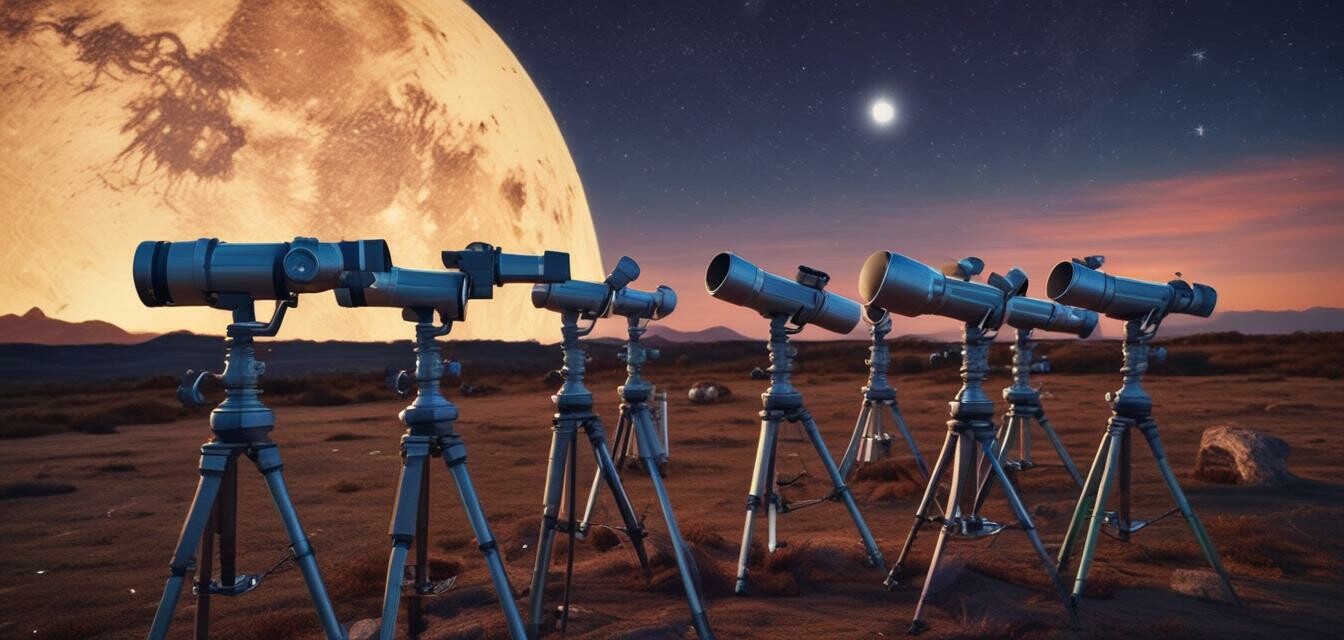
How to Choose the Best Telescope for Planet Viewing
Key takeaways
- Consider the aperture size for clear planetary images.
- Choose the right type of telescope based on your experience level.
- Look for essential features like optical quality and mounting options.
- Research accessories to enhance your viewing experience.
- Compare different models to find the best fit for your needs.
If you’re fascinated by the planets in our solar system and want to get a closer look at their magnificent details, selecting the right telescope is crucial. With the range of options available, it can be daunting. This guide will walk you through the essentials of choosing a telescope that will enhance your planet-viewing experience, exploring features, types, and important specifications.
Understanding telescope types
The first step in choosing a telescope is understanding the different types available. Each type has unique features that cater to varying levels of expertise and viewing preferences. Here are the primary types:
- Refractor telescopes: Utilize lenses to gather light, providing clear images, making them excellent for planet viewing. They are generally low maintenance.
- Reflector telescopes: Use mirrors, which can offer larger apertures at lower costs, ideal for deep-sky observation and planets.
- Catadioptric telescopes: Combine both lenses and mirrors, offering versatility and compact size, suitable for a variety of astronomical targets.
- Digital telescopes: Incorporate modern technology for automated tracking and imaging, great for beginners and tech-savvy users.
Key features to consider
When selecting a telescope for planet viewing, certain features are especially important
| Feature | Importance |
|---|---|
| Aperture | Determines how much light the telescope can gather; larger apertures provide better image clarity. |
| Optical quality | High-quality optics reduce distortion, crucial for clear images of planets. |
| Mount Type | A stable mount allows for easier tracking of celestial objects and enhances the overall viewing experience. |
| Portability | Consider the weight and size if you plan to travel to different viewing locations. |
| Accessories | Additional lenses and filters can enhance your ability to see planets in detail. |
Choosing the right aperture
The aperture size, which is the diameter of the telescope's primary lens or mirror, is one of the most critical factors in your decision. Here’s a quick breakdown:
- Small aperture (70-90mm): Good for viewing bright planets but limited for fainter ones.
- Medium aperture (100-150mm): Offers a balance between astronomy beginners and more serious enthusiasts.
- Large aperture (200mm and above): Ideal for detailed planetary observations and allows for dimmer objects.
Factors influencing your choice
After understanding the types of telescopes and key features, various factors will influence your selection:
- Your experience level: Beginners might prefer a simpler model, whereas seasoned astronomers might look for more advanced features.
- Budget: Prices can vary significantly; setting a budget will help narrow down options.
- Space considerations: Your viewing location and whether you have enough room to set up a larger telescope.
- Observing preferences: If planet viewing interests you more than deep-sky objects, emphasize telescopes that excel in that area.
Accessories that enhance your viewing experience
Once you’ve chosen a telescope, the right accessories can vastly improve your stargazing experience. Consider the following:
- Eyepieces: Different eyepieces can provide varying magnification levels, offering more flexible viewing options.
- Filters: Planetary filters can enhance contrast and reduce glare, making planets stand out more vividly.
- Equatorial Mounts: They allow for smoother tracking of celestial objects.
Comparing different models
Once you narrow your options, comparing different models can help make your final decision easier. Here’s a simple comparison table that can guide you in evaluating telescopes:
| Feature | Model A | Model B | Model C |
|---|---|---|---|
| Aperture | 80mm | 120mm | 200mm |
| Type | Refractor | Reflector | Catadioptric |
| Mount | Alt-Azimuth | Equatorial | Computerized |
| Price | Low | Moderate | High |
Final thoughts
Choosing the best telescope for observing planets is not a one-size-fits-all process. By understanding the different types of telescopes, key features, and factors involved, you can select a model that aligns with your personal preferences and experience level. This careful selection not only opens up the night sky for exploration but enhances your overall stargazing experience.
Pros
- Enhanced planet visibility.
- Variety of models available for every budget.
- Opportunity for both beginners and seasoned astronomers.
Cons
- Initial investment can be high.
- Some models may require more maintenance.
- Portability concerns with larger telescopes.
As you dive into the world of astronomy, make sure to check out our detailed guides on Refractor Telescopes and Buying Guides to enhance your knowledge even more. Remember, the stars are waiting for you!